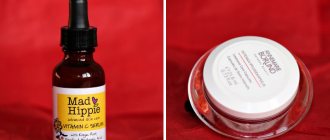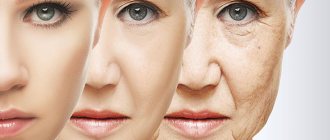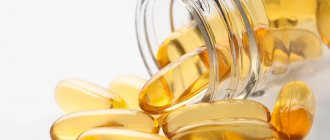Vitamin D is often called the sunshine vitamin. In this article, we will explain to you the reason for this name. We will try to present as much information as possible about it. We will talk about the difficulties of saturating the body with this vitamin and try to give recommendations for overcoming this problem. Let's share information about the dangers and contraindications, as they say, “forewarned is forearmed.” After this detailed article, it will be easier for you to navigate the features of vitamin D (D).
Vitamin D (D) has a dual role in the human body. The fact is that it functions as a vitamin and hormone. This feature is unique. This is what sets this vitamin apart from others. Such uniqueness can be unpredictable and dangerous. Hormones are very unpredictable if used carelessly, so you need to consult a specialist.
What foods contain vitamin D (D)
With proper nutrition, our body receives useful substances, but the component we are talking about in this article is quite scarce. Its presence in foods is low and there are very few products that contain it compared to other vitamins that can be found in many everyday foods.
Where to find vitamin D (D)
- fatty fish (herring, salmon, sardines in oil, tuna and others);
- fish fat;
- caviar;
- cheese;
- milk or dairy products;
- butter;
- beef;
- liver of fish and animals;
- egg yolk;
- nettle;
- parsley;
- mushrooms;
- yeast.
Composition of Radevit ointment – water-soluble vitamins
The ointment, which can save heels from dryness and cracks, contains 3 water-soluble vitamins. Let's talk about each in more detail.
Vitamin A
You've probably heard about it and know that there is a lot of it in carrots. The correct name of this substance is retinol palmitate and there is a large review article about it on our website.
The main function of this substance is to stimulate cell proliferation and prevent the formation of the stratum corneum on the epidermis. Therefore, it is necessary to ensure that the heels are tender, soft, and most importantly, without cracks.
Vitamin D3
It has a positive effect on literally all human organs and systems, including the skin. Helps stimulate the production of collagen fibers, increases local immunity, which does not allow germs and viruses to penetrate the skin and carry out their destructive effects. With regular use, the elasticity of the skin increases, it becomes healthy and no microbes, viruses or bacteria can harm it.
Vitamin E
This is one of the most famous vitamins, which in some cases is also called Alpha-tocopherol acetate. This is a well-known and widely used antioxidant that fights early cell aging and prevents the manifestations of this process. It can also be used to increase the elasticity of the epidermis.
It is pertinent to note that all three of these fat-soluble vitamins are dermatotropic, that is, they have an “affinity” for skin cells. This affinity is due to the presence of special receptors on the surface of cells that capture and transport these substances into the cells. Moreover, vitamin D can be synthesized in the skin under the influence of sunlight.
From all that has been said, it is obvious that Radevit ointment, when applied locally, serves as an additional source of dermatotropic vitamins necessary for life support and renewal of normal skin. Radevit helps her stay healthy and beautiful.
Shortage in the body
In autumn and winter, our body is susceptible to a deficiency of this component in our body. This can be easily explained by the low activity of the sun, and there is little of it in products. It is formed in the body precisely due to the effect of ultraviolet rays on the skin.
Daily norm per day 10-15 mcg = 400-600 IU
A deficiency in the body is dangerous due to the lack of functions that should be performed with its participation. The fact is that thanks to its presence in the body, the work of calcium saturation is normalized, which performs a number of obviously important functions. A small amount of calcium in the body is dangerous for children, pregnant women and the elderly. With age, it is more difficult to saturate the body due to weak receptor activity. The lack of vitamin has a detrimental effect on the functioning of the nervous system.
Its absence in sufficient quantities also has a negative impact on the skin. It controls the resistance of the epidermis from external irritants and controls the water level in the cell structure. It is necessary to note the normalization of processes and active metabolism. We also draw attention to its participation in the skin alternately passing through three basic stages: the synthesis of new cells, keratinization and renewal through the gradual death of keratinized parts. The last stage is usually barely noticeable, so don’t be put off by the name. Protein synthesis is impossible without the presence of vitamin D (D).
Acute deficiency can cause a number of serious diseases: rickets, softening of bones and others.
Milder stages are accompanied by other symptoms:
- decreased quality of visual receptors;
- irritability;
- weakening of muscle tone;
- insomnia;
- burning in the mouth;
- weight loss due to lack of appetite, accompanied by nausea, and individual symptoms are also possible.
If you often use sunscreen or other products when caring for your skin, try to do such procedures less often. Strong sunscreens cause vitamin D deficiency, which can then have a detrimental effect on your health. After all, the sun is its main source.
Vitamin K
Vitamin K is a fat-soluble vitamin that combines a large group of substances - naphthoquinones. It is important for blood clotting - coagulation. There are seven known types of vitamin K, but vitamins K1 and K2 are most often found in nature. Vitamin K is introduced into cosmetic products as part of extracts of kelp, yarrow, plantain, hops, and cucumber. Products with extracts rich in vitamin K are used to correct rosacea and fight inflammation.
Vitamin K is the first remedy for healing injuries associated with disruption of the continuity of blood vessels and, in general, for any problems with blood vessels. Vitamin K improves skin tone, eliminates dilated blood vessels and age spots. It brightens skin damaged by intense sun exposure and environmental pollution. Vitamin K is also suitable for caring for the skin of older people with altered blood vessels. In the market of cosmetic products for skin prone to redness and spider veins, vitamin K is an absolute favorite.
It is often included in whitening cosmetics: circles under the eyes are reduced and puffiness goes away. And the anti-inflammatory and healing effect is used in special series that restore the skin after sunburn and salon procedures - peelings, microdermabrasion. Vitamin K is often used in eyelid and eye care products.
Are you wondering what water-soluble vitamins are in cosmetics? We will talk about this in our next article.
How to take vitamin D (D)
There is a great danger in using it with other drugs. To avoid negative consequences, consult about compatibility. Under no circumstances exceed the dose prescribed by your specialist. Let me remind you that it has a dual function, namely as a vitamin and a hormone.
Benefits for the skin
Vitamin D (D) in active forms is prohibited in cosmetics. Therefore, some components of his group are simply not used. Cosmetics often contain provitamin D (D).
Useful components from this group are used in skin care cosmetics. Serums, creams and chapsticks often contain this substance.
In reasonable doses, some components of the vitamin D group will be beneficial for all skin types.
It prolongs youth, like vitamin E. This occurs due to its effect on the receptors of the muscular system. Thus, muscle contraction occurs, which significantly tightens and keeps the skin toned.
Do not get carried away with being in the sun or in a solarium. Excessive exposure to ultraviolet radiation can have a detrimental effect on the skin in the form of age spots and more dangerous diseases.
A sufficient amount of vitamin D (D) will keep the skin in a state of elasticity and will help slow down the process of wrinkles. It will also accompany the process of collagen production. The skin will glow with a healthy glow.
Skin that is prone to acne and other inflammatory processes needs it in sufficient quantities. The nutrients will penetrate deep into the skin and help prevent problems of this skin type. Experts suggest treating problematic skin with complex therapy; if you have this type of skin, consult a doctor. Before treatment, you will undergo a series of tests and other checks, which will allow the specialist to describe the treatment package as accurately as possible. At home, you can use some vitamin D (Vitamin D) recipes.
Vitamin D and skin pathologies
As mentioned above, vitamin D is produced endogenously in the skin . Keratinocytes produce large amounts of 1α,25(OH)2D3 from 25(OH)D3, which is regulated by exogenous 1α,25(OH)2D3. At the same time, the production of biologically active vitamin D3 depends on the degree of differentiation of keratinocytes [4]. Since keratinocytes express the VDR receptor, their activity can be influenced by the active form of vitamin D3, 1α,25(OH)2D3, which, together with calcium, is one of the most powerful regulators of epidermal differentiation [5].
In vivo, a calcium gradient is formed in the epidermis - its low concentration is in the basal layer and the highest in the spinous layer. Calcitriol increases the production of involucrin, transglutaminase, loricrin and filaggrin, and also potentiates calcium-induced differentiation of keratinocytes at the level of gene expression. It also promotes the formation of the stratum corneum of the epidermis.
This phenomenon occurs as a result of the ability of the active form of vitamin D3 to increase intracellular calcium levels through the induction of calcium receptor and phospholipase C. On the other hand, calcitriol inhibits the proliferation of keratinocytes. During the differentiation process of epidermal cells, specific genes are sequentially turned on and off under the influence of 1α,25(OH)2D3 and calcium, which leads to the formation of mature keratinocytes [5].
Another aspect of keratinocyte growth and differentiation is the formation of intercellular junctions, which are essential for cell-cell interactions and therefore for the regulation of epithelial morphogenesis, growth, and differentiation.
Thus, the effect of calcitriol on keratinocytes is that it stimulates ceramide synthesis by inducing Mg2+-dependent sphingomyelinase, which regulates the conversion of sphingomyelin to ceramide. In turn, ceramides themselves increase the effect of calcitriol on keratinocyte differentiation, thus forming feedback [6]. In addition, pharmacological administration of high doses of calcitriol induces apoptosis of keratinocytes and other epidermal cells, while at physiological concentrations this substance blocks the effects of pro-apoptotic ceramides, UV radiation and tumor necrosis factor-α (TNF-α) [7].
The pro-antioxidant effect of vitamin D is also known . In vitro studies have found that calcithiol stimulates the production of antioxidants by keratinocytes [8].
Speaking about metabolism and the effect of vitamin D on processes occurring in the skin , we should discuss the effect of ultraviolet radiation on processes occurring in the human body.
It is well known that sunlight (mainly mid-wave ultraviolet B irradiation) is necessary for the efficient production of vitamin D. However, solar radiation is considered one of the most harmful external factors to the skin. Exposure to UV rays with a wavelength of 280-320 nm leads to direct damage to the DNA of cells, thereby contributing to the development of skin neoplasia. Long-wave UV light (320-400 nm) is mainly responsible for skin aging. Therefore, in the last decade, doctors and scientists have formed a clear opinion about the potential dangers of ultraviolet radiation. As a result, people around the world have begun to strive to protect themselves from the sun, which has now contributed to the global problem of hypovitaminosis D and an increase in the incidence of rickets, even in socially prosperous countries. Meanwhile, it should be noted that optimal synthesis of vitamin D in the skin does not require prolonged exposure to ultraviolet irradiation. Exposure to ultraviolet radiation on the skin of the hands and feet for 15 minutes on a sunny day (0.25-0.5 minimum erythemal dose (MED)) is sufficient to produce about 2000-4000 IU of vitamin D [9]. In addition, it has been estimated that skin exposure to 1 MED of ultraviolet irradiation promotes the formation of approximately 20,000 IU of vitamin D [3]. However, to prevent hypovitaminosis D, it is currently recommended to expose the skin to no more than 1 MED of UV rays, or simply take vitamin D supplements.
Interestingly, it is impossible to cause an overdose of vitamin D by sunbathing for a long time, due to the fact that excessive exposure to ultraviolet radiation leads to structural changes in this vitamin and its subsequent photodegradation.
Speaking about UV irradiation in connection with vitamin D, it should be mentioned that ultraviolet rays are an important factor contributing to the formation of free radicals in the human body, and vitamin D itself, as mentioned above, has antioxidant potential. Although in vitro studies have shown that vitamin D has antioxidant properties, in vitro studies have yielded conflicting results. For example, some studies have demonstrated the protective effects of 1α,25(OH)2D3 and its analogues against UV-induced DNA damage by free radicals [10]. It should also be noted that the protective, antioxidant effect of vitamin D may depend on the cell type , as well as the influence of internal and external factors. Thus, in order to understand the complexity of vitamin D functioning in human skin, we must go far beyond the classical concepts of pathophysiology and biochemistry, especially in relation to the effects of sun exposure on living cells and tissues.
Thus, vitamin D has a fairly wide range of effects on physiological processes in the skin, opening up prospects for its use in the treatment of various dermatological diseases.
Vitamin D for the treatment of atopic dermatitis
The promise of vitamin D for the treatment of atopic dermatitis is based on the vitamin's potential to suppress inflammatory responses, stimulate antimicrobial peptide production, and improve skin barrier properties. In addition, there are research results indicating the effect of hypovitaminosis D on the risk of developing atopic dermatitis and the course of this disease.
Thus, Oren E. et al. found that the risk of developing atopic dermatitis was 5 times higher among those with vitamin D deficiency . However, no connection was found between hypovitaminosis D and the development of other atopic diseases: bronchial asthma or allergic rhinitis [11].
Peroni DG et al. assessed the relationship between vitamin D deficiency and the severity of atopic dermatitis and found that serum 25(OH)D levels were higher in patients with mild disease compared with those in patients with moderate to severe dermatitis [12]. In addition, it was found that the intake of vitamin D from food in patients with atopic dermatitis is lower than in relatively healthy individuals, while the level of serum vitamin D in patients with this dermatosis was not changed [13].
However, there are scientific research results that contradict the above data. An observational study of 138 Norwegians with atopic dermatitis found no correlation between low blood vitamin D levels and clinical assessment of disease severity [13]. Another study showed that high vitamin D intake early in life is associated with the risk of developing atopic dermatitis [14]. However, this phenomenon is probably associated with intolerance to foods and/or food additives in children predisposed to atopy, which led to the development of sensitization and thereby stimulated the onset of atopic dermatitis .
However, vitamin D is currently considered as a promising agent for the complex treatment of atopic dermatitis . Indications for the use of vitamin D in patients with this skin disease are based on its immunomodulatory properties, due to which it is in a certain way involved in the pathogenesis of this disease.
Schauber J. et al. [15] in their study showed that the active form of vitamin D (1,25(OH)2D3) increases the expression of antibacterial peptides in the skin and thus prevents infection. In another study, Liu PT et al. [16] established a link between vitamin D-mediated activation of toll-like receptors, cathelicidin production, and decreased susceptibility to bacterial infections. It has been found that, depending on the concentration, vitamin D can stimulate or inhibit keratinocyte differentiation, as well as increase the synthesis of a number of proteins, such as filaggrin, which are necessary for the formation of skin barrier properties [17]. It was further shown that vitamin D analogues are able to suppress in vitro the production of IgE and, accordingly, the development of IgE-mediated skin reactions [18]. Thus, further study of the possibility of using vitamin D preparations for the treatment of patients with atopic dermatitis, especially in children, is a promising direction in modern dermatology.
Today there is a false belief that vitamin D deficiency is rare. However, there is evidence that hypovitaminosis D is detected in all age groups of both sexes in different countries.
The relative norm of vitamin D content in the body is more than 30 ng/ml; vitamin D deficiency is defined when its level in the blood serum is between 20 and 30 ng/ml, and deficiency is defined when the vitamin content is less than 20 ng/ml. [19]. Vitamin deficiency, in addition to low dietary intake, can develop in people suffering from liver and kidney failure, skin diseases accompanied by severe keratinization disorders, alcoholism, and concomitant inflammatory rheumatological diseases. Other factors leading to vitamin D deficiency are genetic factors (increased production of 25(OH)D-24-hydroxylase, which leads to decreased 25(OH)D levels, indoor exposure, environmental pollution, cultural and traditional characteristics, for example, wearing a burqa, frequent, short-term pregnancy in poorly nourished women, etc.
Given the great importance of vitamin D for human health, numerous recommendations have been developed for fortifying foods with it, as well as for adequate calcium intake. Thus, it has been shown that hypovitaminosis D can be prevented by daily intake of 1-1.5 g of calcium and 2000 IU of vitamin D.
We studied this problem in 17 patients with atopic dermatitis (AD), the work is ongoing. It turned out that AD is practically never found in its pure form. This is one of the common comorbid diseases. Thus, in 9 patients (53±12%) there was comorbidity of IgE, its combination with other allergic diseases (allergic bronchitis, bronchial asthma, allergic rhinitis, conjunctivitis). Overweight was noted in 8 (47±12%), underweight in 5 patients (29±11), stomatitis and gastrointestinal diseases in 6 (35±12%). Almost everyone with a combination of blood pressure and excess weight has a vitamin D deficiency, with normal Ca and bone mineral density (BMD). Osteopenia and osteoporosis were identified only in cases of underweight, obesity and normal weight. Based on this, we believe that treatment of vitamin D deficiency in atopic dermatitis must be carried out comprehensively, taking into account comorbidity and personalized for each patient. Thus, when blood pressure is combined with a severe vitamin D deficiency and reduced BMD, high doses of vitamin D are indicated. In particular, for such patients, PARAPHARM has developed “Osteomed Forte”, 2 tablets 2 times a day (patents 249533, 249881; composition in 1 tablet vitamin D3 500 IU, drone brood 100 mg, Ca citrate - 500 mg... for 3 months, until normalization of 25OH D in the blood serum. American researchers in these cases recommend doses of vitamin D of 5000 IU. In our opinion, without drone brood with long-term use of such doses, it is possible to develop hypervitaminosis D, which is undesirable. For hypertension with a slight deficiency of vitamin D, “Osteo-Vit Dz” (patent 249881, composition in 1 tablet vitamin D3 1000 IU, drone brood 100 mg) showed good results, 1 tablet 2 times a day within 3 months Further study of this important problem is necessary.
The role of vitamins in summer
In summer, we can get enough vitamins from exposure to the sun. Before going to the beach, take your time to take a hot bath and wash off all the sebum. And after the beach or sunbathing, don’t immediately wash off the oils on your skin. The fact is that it is thanks to sebum that vitamin D is formed on the skin and is absorbed into the skin through them. This process takes time. If you immediately wash the skin, the likelihood of a beneficial substance entering the body is negligible.
Vitamin F
Vitamin F is a polyunsaturated fatty acid - linoleic, alpha-linolenic and arachidonic, which is part of some natural oils. These acids are extremely important for skin health. They are involved in the synthesis of inflammatory prostaglandins and are necessary for the formation of a proper dermal barrier. With their deficiency, the skin becomes irritated, dry and prone to inflammation and peeling. With a lack of vitamin F, hair and nails become thinner and brittle. Replenishing these substances from the inside and outside (as part of local preparations) relieves these symptoms. Vitamin F is involved in skin fat metabolism.
When applied externally, vitamin F increases the regenerative ability of the epidermis. Saturating the skin with vitamin F helps retain moisture and hydrate even extremely dry skin. Therefore, in the cosmetic industry, vitamin F is used in nutritional and regenerating ingredients. moisturizing preparations for aging and dry skin to maintain youthful skin and correct wrinkles, and in care products for dry and brittle hair. Vitamin F has been scientifically proven to correct acne.
Vitamin F is also widely used to strengthen nails. Its concentration in cosmetic formulations ranges from 2 to 7%. At the same time, the task of introducing vitamin F into cosmetic compositions is quite difficult, since in isolated form vitamin F is easily subject to peroxidation. turning from a beneficial substance into a source of free radicals harmful to healthy skin. A mixture of unsaturated fatty acids (linoleic and linolenic) in the form of triglycerides is found in large quantities in many vegetable oils.
Overdose and harm
Symptoms of excess:
- increased blood pressure;
- rapid fatigue;
- frequent headaches;
- imbalance of kidney and heart function, as well as possibly individual symptoms.
It will cause harm to the body if you take it for allergic reactions on the skin. Diseases like rosacea and rosacea prohibit you from using this drug.
We tried to explain the features of this substance as clearly as possible. Covered many factors that will be useful to you. In the following articles you can read various recipes that you can use at home.
Vitamin D what is it
In a general sense, the term vitamin D refers to a group of six fat-soluble substances that maintain mineral balance. It is customary to summarize the properties of vitamins of group D, reducing them to a description of the two most biologically valuable. The first is Vitamin D3 (cholecalciferol), which is synthesized in the skin under the influence of sunlight. And the second, Vitamin D2 (ergocalciferol), we get it from some foods.
Both vitamins undoubtedly have biological value.
D2 functions as vitamins should, ensuring the concentration of phosphorus and calcium in the blood and tissues. It affects the functioning of organs that have receptors sensitive to it - kidneys, heart and muscle tissue. The body can store some of this vitamin in fiber, liver and kidneys. This supply of vitamin D2 helps reduce the risks of Ca and P deficiency and ensures tissues are constantly supplied with minerals.
Vitamin D3 was discovered later, while solving the problem of rickets. And it turned out to be tens of times more effective in combating this violation than its “namesake” with the number 2.
As we mentioned, D3 is synthesized under the influence of ultraviolet sunlight from a precursor - the precursor of 7-dehydrocholesterol, located in the lipids of epidermal tissues. Under the influence of light, the substance changes structure and combines with the protein element transcalciferin. These formations are transported by the blood to the kidneys and liver, where further transformation occurs. The end product is the active form of D3, namely calciferol, which is a representative of steroid hormones.
The described chain of synthesis occurs, according to various sources, up to 48 hours. There is a dependence on skin pigmentation - the darker the skin, the slower the production. Synthesis under the influence of light allows us to obtain up to 90% of the required volume, the rest is supplemented by another source of cholecalciferol. It is as a supplement that we get cholecalciferol from some products, most of all its content is in the liver of marine fish. Therefore, it is very important to ensure the presence of necessary products in your diet during the winter period or buy vitamin D in the form of special supplements in capsules.
Large selection of vitamin D in the catalog of our online store. By following the link you can buy vitamin D in Moscow at an affordable price. Order with delivery throughout Moscow and throughout Russia.
Vitavin D-3 Now
The absorption process obtained with D3 nutrition occurs in the intestines and requires optimal functioning of the biliary system. Next, its binder with albumin is transported to the liver, where it is converted into its active form. One part then goes to organs and tissues, while the other is stored in reserve. Note that the properties of Vitamin D3 differ from the general properties inherent in vitamins. Absorption from the outside by the body occurs with the help of enzymes, which is typical for vitamins, and its own synthesis is ensured by photolysis. Moreover, the presence of special receptors in organs allows it to be classified as a hormone.
Biological role of D-3
Vitamin D3 is crucial for maintaining the balance between calcium and phosphorus. Maintaining this balance is extremely important, since it determines the ability of calcium to penetrate cells and take its place in the composition of nucleic acids in the cell nucleus. Calcium can penetrate into the cell only through a special molecular mechanism in the membranes. This “calcium pump” operates by releasing the energy needed to pass through the membrane from an ATP molecule and two Ca ions. It is thanks to calciferol that a two to one proportion is maintained, ensuring the supply of cells and, accordingly, the normal functioning of the entire organism.
Many organs have calciferol-sensitive receptors: epidermal cells, intestines and kidneys, brain and pituitary gland.
Accordingly, D3, one way or another, interacts with their tissues, helping to perform certain functions to regulate mineral metabolism. The energy of vitamin D3 is associated with the synthesis of parathyroid hormone (PTH), produced by the parathyroid glands. This hormone is able to increase plasma Ca levels and at the same time reduce phosphorus levels. If cholecalciferol deficiency occurs
and calcium decreases, the process of releasing the previously deposited mineral into the blood occurs and at the same time the flow of P into the intercellular fluid decreases. The production of D3 is also actively stimulated by other hormones. This is especially evident during pregnancy, when androgenic hormones activate the production of D3, providing additional minerals for the formation of the unborn child.
Main functions
According to various sources, our body contains up to one and a half kilograms of calcium. The vast majority of it is contained in bone tissue. This is the most important element for a person. Minor fluctuations in its content, even by hundredths, can lead to serious failures:
- the sensitivity of nerve tissue cells decreases
- muscle activity degrades due to a decrease in the ability to transmit excitation along muscle fibers
- mineral deficiency appears at the cellular level
- the work of enzymes is suppressed and their effect on metabolism is reduced
Vitamin D3 ensures the occurrence of many vital processes:
- building bone cells
- functioning of immune system cells
- passage of nerve impulses
- work of muscles and heart muscle
- metabolism in the skin.
Without this element, cell development and division are impossible.
As already mentioned, cholecalciferol prevents rickets, eliminating softening of the bones and subsequent deformation. Lack of D3 is dangerous not only for younger people. In adulthood, deficiency can provoke problems with the musculoskeletal system, including the development of arthrosis.
Group D vitamins need
The required consumption rate is determined by several factors, such as skin pigmentation, age, climatic conditions of residence and the presence of pathologies that prevent the absorption of cholecalciferol. The age-related increase in demand is dictated by the fact that in older people the content of the precursor substance in the skin tissue decreases. Hence, production decreases and demand increases accordingly.
Those with dark skin have a high content of melanin in their skin. This pigment significantly dampens the activity of light photons, which is important for the production of D3. Therefore, it is important for dark-skinned people to increase the time they spend in the sun, or take drugs with D3 in capsules or tablets.
The body's production of D3, in particular, is subject to seasonal fluctuations depending on the amount and intensity of sunlight. And in a general sense, there tends to be a dependence on geographic location, with people living in northern latitudes experiencing a disadvantage compared to southerners. For example, Moscow and most territories of our country are located in latitudes that are zones with reduced insolation and residents have significant risks of D3 deficiency. And here the selection of diet and the use of preparations containing Vitamin D are of particular relevance.
It should be mentioned that the average norms of requirement have long been established and repeatedly confirmed and the maximum level of consumption of cholecalciferol has been determined. Usually all sources indicate them in ME. This name denotes international units (more rarely ED - units of effectiveness), which are used to denote not the mass of a substance, but rather the dose that has a specific bio-activity. So in our case, 25 thousandths of a microgram of vitamin D3 is 1IU.
Let us present the figures for the need and maximum permissible consumption (ME).
| Age | Need | Maximum consumption |
| Up to 1 year | 400 | Up to 1500 |
| Under 18 years old | 600 | From 2500 to 4000 |
| Over 18 years old | 600 | Up to 4000 |
| Over 70 years old | 800 | Up to 4000 |
When determining the need and selecting the dosage, it is worth taking into account individual characteristics and it is better to consult a specialist. It is necessary to use preparations with Vitamin D with caution and under the supervision of a doctor during pregnancy and young children. In the first case, dosages usually do not exceed 500 units, and in the second, it is often prescribed for the prevention of rickets.
It is necessary to discard the prejudices that you can accumulate D3 for future use, for example, by increasing your exposure to the sun in the summer and the reserves will be enough for the entire winter season. Unfortunately, this is not possible, and it is necessary to constantly take care not to experience a deficiency.
Deficiency and excess of vitamins D
Common causes of vitamin D deficiency include poor absorption caused by diseases of the internal organs, or the use of certain medications, in particular diuretics. Often we ourselves become the culprit - we reduce our exposure to the sun and overuse sunscreen cosmetics, or significantly reduce our consumption of meat dishes.
You should think about a vitamin deficiency if certain symptoms appear:
- deterioration of the condition of the nail plates, their fragility;
- the appearance of split ends;
- acne of the skin;
- dental problems, including caries.
Having identified such signs, experts recommend increasing the consumption of foods rich in cholecalciferol or starting additional use of medications and buying vitamin D-3 in tablets or capsules.
Vitamin D3 buy
It is especially important to prevent D-3 deficiency in children to avoid the development of rickets. With this disorder, the saturation of bone tissue with minerals decreases due to insufficient Ca and P content in the blood plasma. Increasing rickets impedes the growth and proper development of dental and bone tissue, can provoke skeletal defects and even cause visual impairment.
When examining children, specialists pay attention to the external symptoms of this pathology: frequent tearfulness and irritability, decreased appetite and delayed retraction of the fontanel. In most cases, early detection and use of D3 drugs can overcome this disease.
In adulthood, a lack of D3 can lead to a systemic deficiency of the minerals calcium and phosphorus in the bones, which can lead to deterioration and weakening of bone structure. With these complications, bones become fragile and there is a risk of injury, posture may change and muscle tone decreases. With such problems, the use of D3 drugs becomes necessary and in the early stages helps to overcome the pathology completely.
Excessive vitamin D-3 content, as well as its deficiency, is accompanied by unpleasant manifestations. These include general weakness and nervousness, headache and nausea. Cholecalciferol, when its dosage is significantly exceeded, raises the Ca content, and thereby increases the excretion of salts from the body. Deposits of calcium salts may form in tissues and organs.
The following pathologies can often be observed: disruption of the heart muscle and kidneys, weight loss, development of urolithiasis and high blood pressure. A state of hypervitaminosis for a couple of weeks can disrupt the work and functions of many organs due to calcification, which can consequently cause irreparable damage to health. Therefore, in such situations, you need to contact medical institutions.
D-3 in products
The content of vitamin D-3 in food products is insignificant to cover the needs of our body. It is worth paying attention to the consumption of ocean fish, preferably fatty fish and meat by-products, preferably liver. A small amount is also present in meat and mushrooms; it is possible to obtain it from fruit and vegetable dishes.
The best sources of cholecalciferol are:
D-3 is preserved well when heated, this allows it to be absorbed from various dishes, including canned food. Canned seafood in oil is especially useful in this regard. D3 from fish is perfectly absorbed, since the fatty acids it contains contribute to this. When consuming mushrooms, it is worth considering that those grown under artificial conditions are significantly inferior in the content of this important element to their counterparts collected in the wild.











